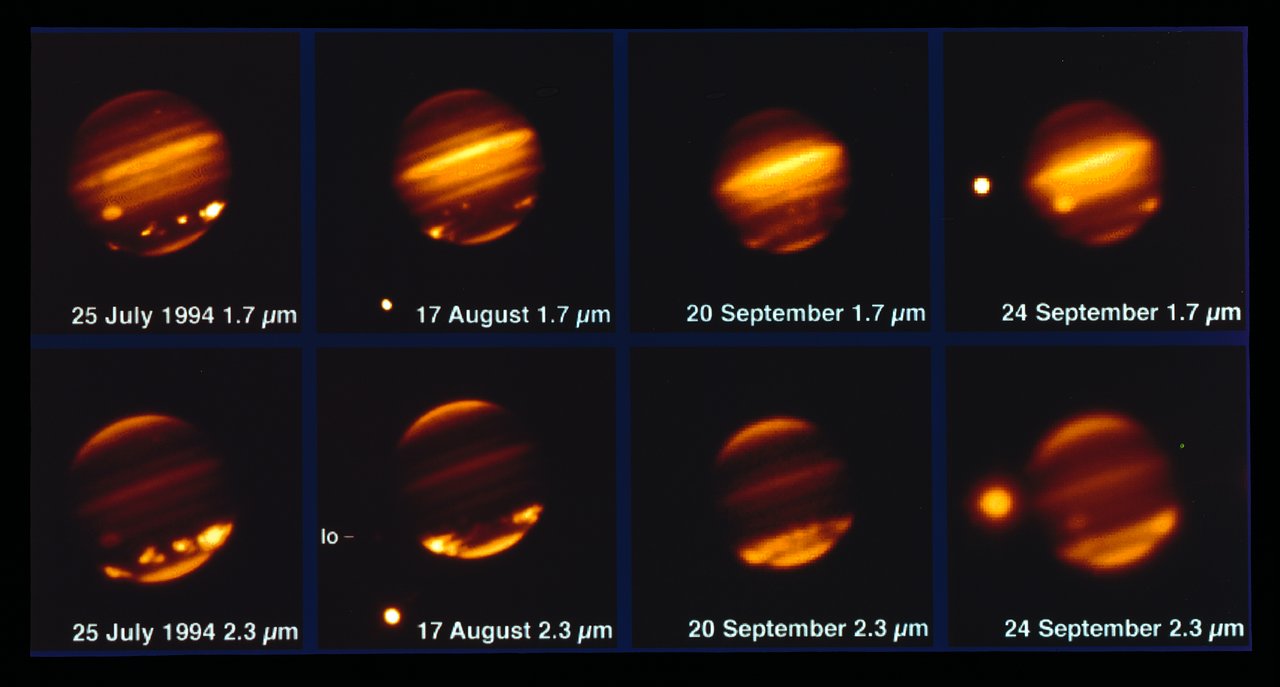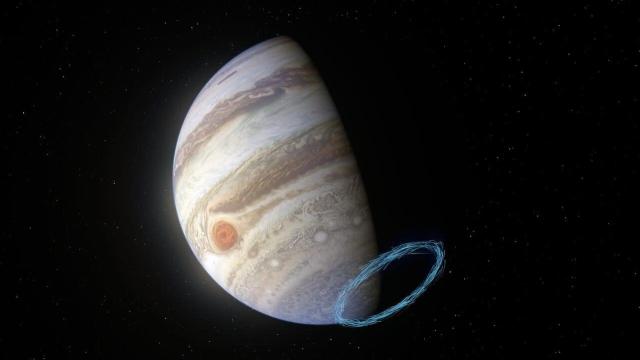For the first time ever, astronomers have measured winds inside Jupiter’s middle atmosphere, revealing unexpectedly fast jet streams within the planet’s deeper layers.
A paper published in Astronomy & Astrophysics is giving new meaning to the term “polar vortex.”
Using the Atacama Large Millimetre/submillimeter Array (ALMA) in Chile, astronomers have clocked the speed of polar jets located far below the cloud tops, and, wow, is it ever gusty down there. The fastest of these jets is moving at 1,440 km per hour, which is nearly five times faster than winds produced by the strongest hurricanes on Earth.
Thibault Cavalié, the lead author of the study and a planetary scientist at the Laboratoire d’Astrophysique de Bordeaux in France, said these jets, found under Jupiter’s main auroras (yes, Jupiter has auroras, and they’re quite stunning), seem to be the “lower tail of the supersonic jets seen 900 km above,” as he explained in an email. These currents could form a “huge anticyclone with a diameter of 3 to 4 Earth diameters and a vertical extent of 900 km,” said Cavalié, to which he added: “This is unique in the solar system.”
In a statement put out by the European Southern Observatory, Cavalié described the newly detected feature as a “unique meteorological beast.”
Measuring wind speed below the top atmospheric layer of Jupiter is not easy. The iconic red and white bands that streak across Jupiter are typically used to measure winds at the top layer, and the planet’s auroras, which are linked to strong winds in the upper atmosphere, are also used as reference points. But to be fair, scientists haven’t really been able to measure winds in the middle atmosphere of Jupiter — the stratosphere — until now.
Two things made these measurements possible: a famous comet and a very powerful telescope.

The comet in question is Shoemaker–Levy 9, which smashed into Jupiter in 1994. The impact left distinctive molecules in the atmosphere, and they’ve been blowing around the gas giant for the past 27 years. The presence of these molecules — namely hydrogen cyanide — made it possible for Cavalié and his colleagues to peer below the cloud tops and measure the speed of stratospheric jet streams.
To detect these molecules, the team used 42 of ALMA’s 66 high-precision antennas, marking the first time that scientists have obtained such measurements in Jupiter’s middle atmosphere.
Specifically, the ALMA data allowed the scientists to measure tiny frequency changes in the radiation emissions of molecules as they’re blown by winds in this part of the planet. In other words, they measured the Doppler shift. By doing so, “we were able to deduce the speed of the winds much like one could deduce the speed of a passing train by the change in the frequency of the train whistle,” explained Vincent Hue, a planetary scientist at the Southwest Research Institute and a co-author of the new study, in the ESO statement.
These measurements showed that winds under the auroras near the poles were moving at 1,440 km/h, which is more than twice the speed of winds swirling within the planet’s Great Red Spot. Toward the equator, stratospheric winds were clocked at an average speed of 600 km/h.
High-speed winds had previously been detected at the upper atmospheric layer, but scientists figured that the deeper you go the slower you go, as far as wind speeds are concerned. The new research suggests otherwise, a finding that came as a complete surprise to the team.
The newly detected winds are fast, but they’re not the fastest in the solar system, nor are they even the fastest on Jupiter. The winds observed under the aurora of Jupiter are “twice as fast as the fastest winds measured at the cloud-top of Jupiter,” said Cavalié. “Higher up,” however, and “still under the aurora in a layer called the ionosphere,” there are “winds with supersonic speeds of 1 to 2 kilometres per second,” or 3,600 to 7,200 km/h. Neptune, he added, “has the strongest winds in the solar system at cloud level and they are 25% faster than the winds we have measured under the aurora.”
[referenced id=”1238136″ url=”https://gizmodo.com.au/2020/08/shallow-lightning-and-mushy-hail-violent-storms-on-jupiter-are-weirder-than-we-thought/” thumb=”https://gizmodo.com.au/wp-content/uploads/2020/08/07/rfxeop3qoapfjyvqgeqf-300×169.jpg” title=”Shallow Lightning and Mushy Hail: Violent Storms on Jupiter Are Weirder Than We Thought” excerpt=”Lightning and hailstones exist on Jupiter, but they’re of a very different sort than the ones we’re familiar with on Earth, as new research suggests.”]
This research, in addition to measuring winds in Jupiter’s stratosphere, was done as a proof-of-concept for similar investigations to be carried out by the Submillimetre Wave Instrument (SWI) aboard the upcoming Jupiter Icy Moons Explorer (JUICE). Launch is scheduled for next year, and it’ll be the first European mission to Jupiter, with arrival expected in around 10 years time.
